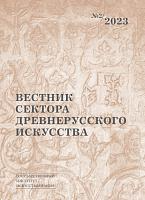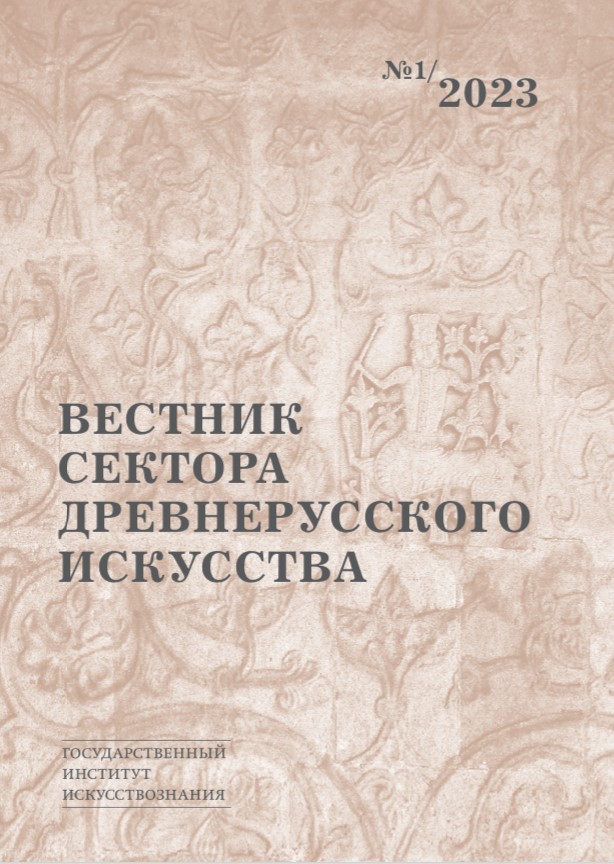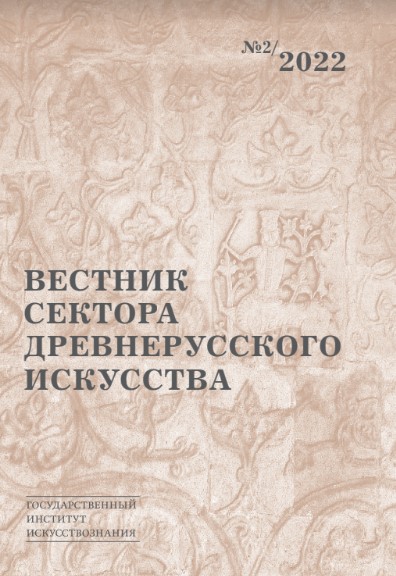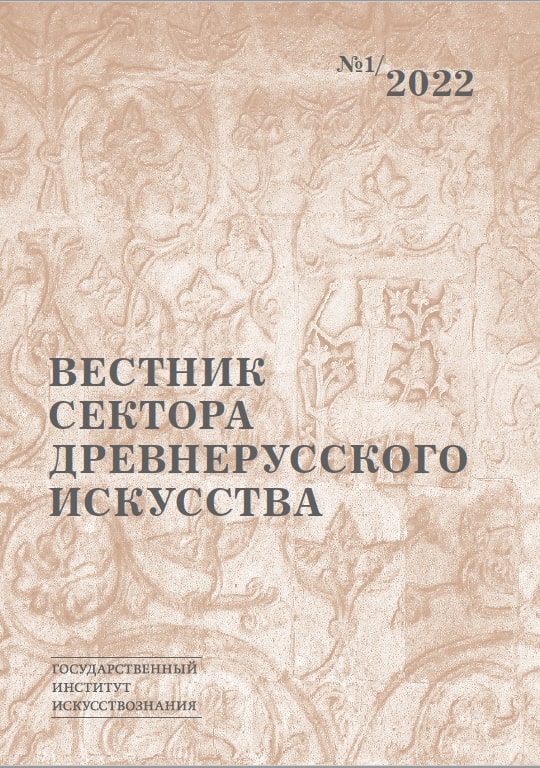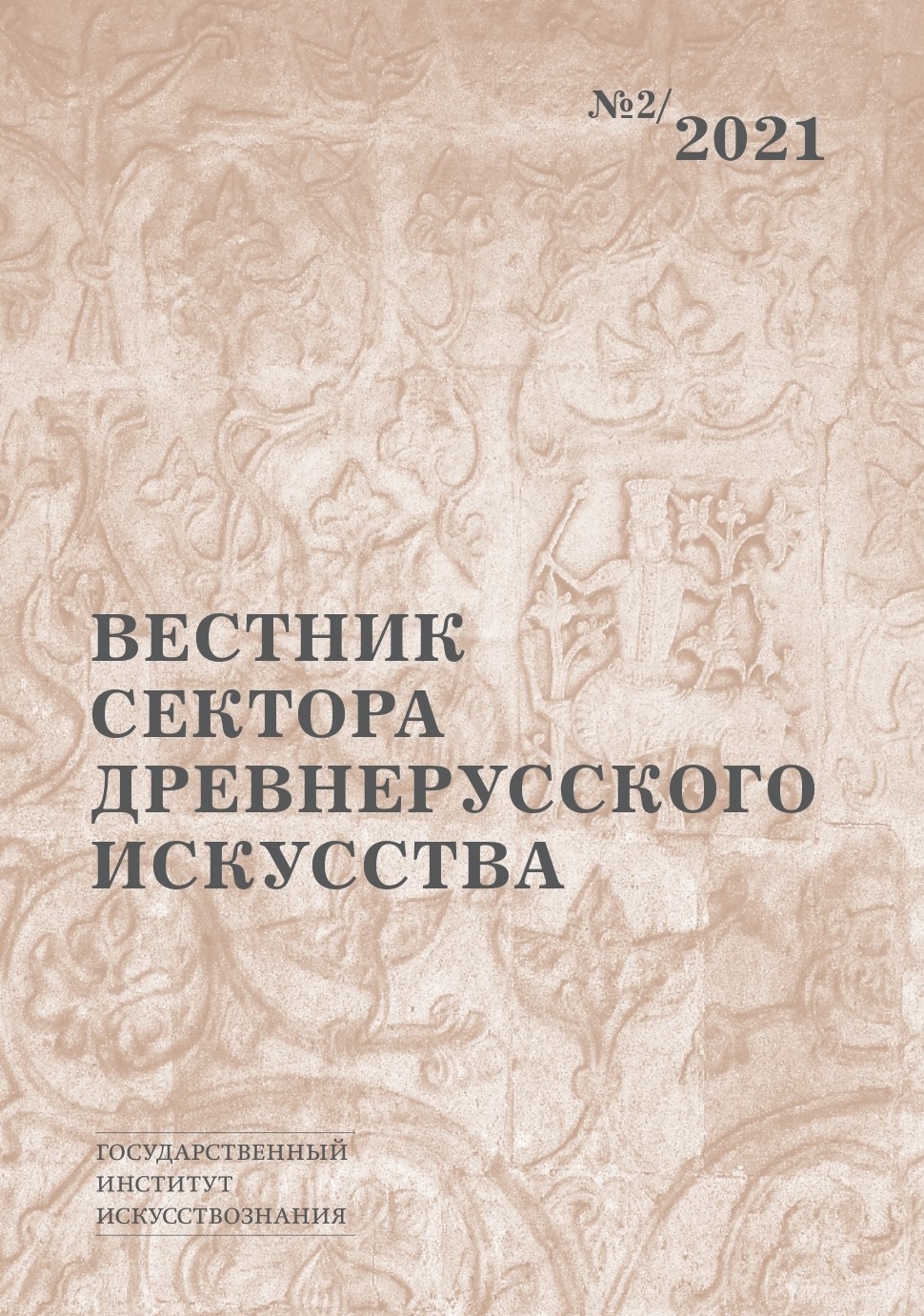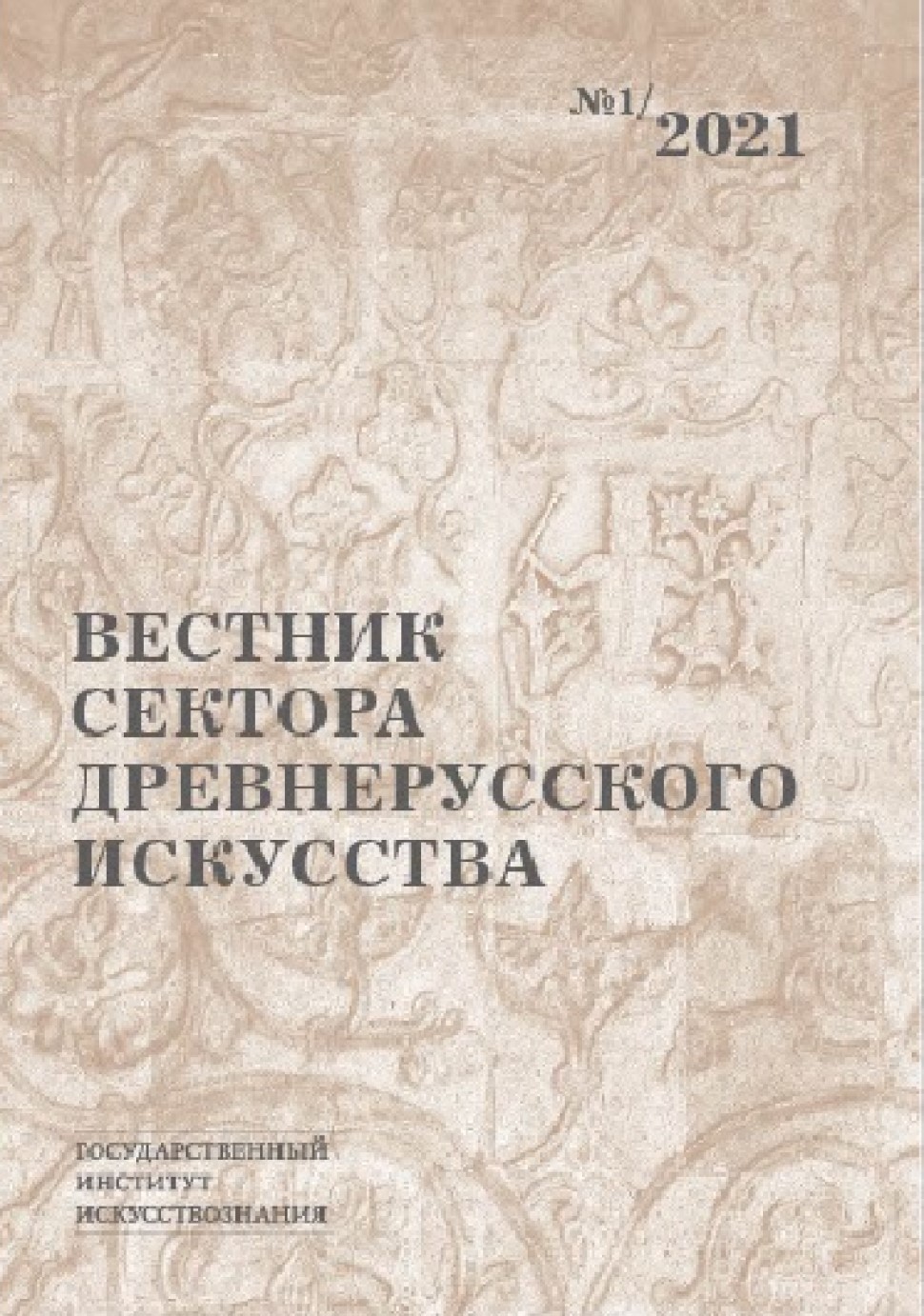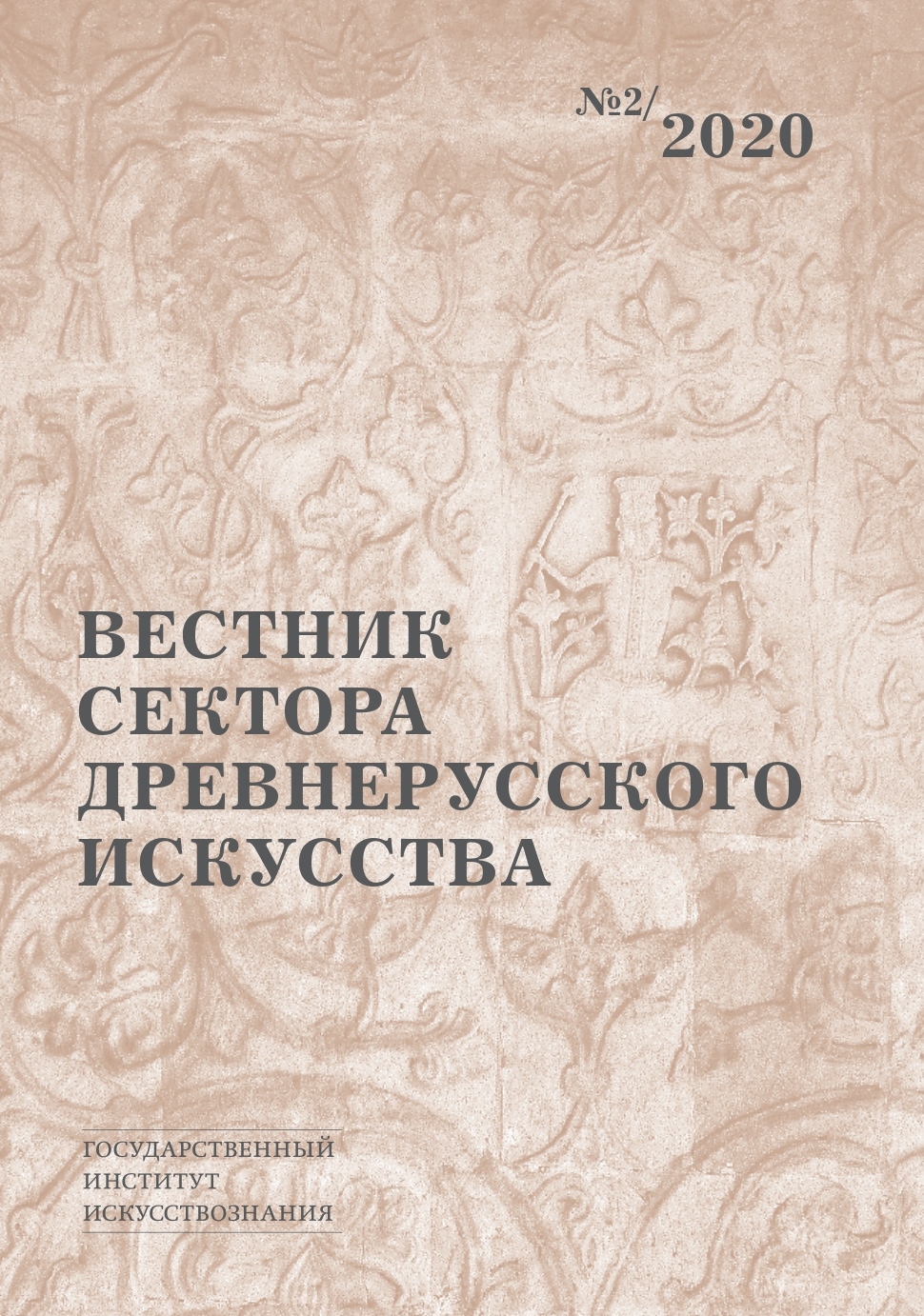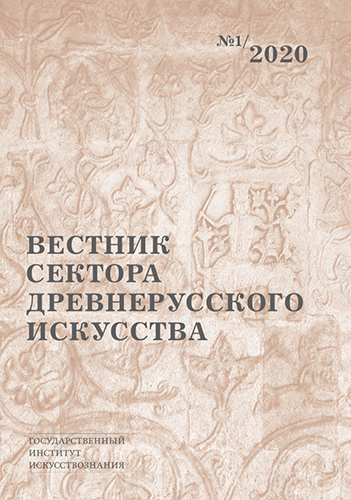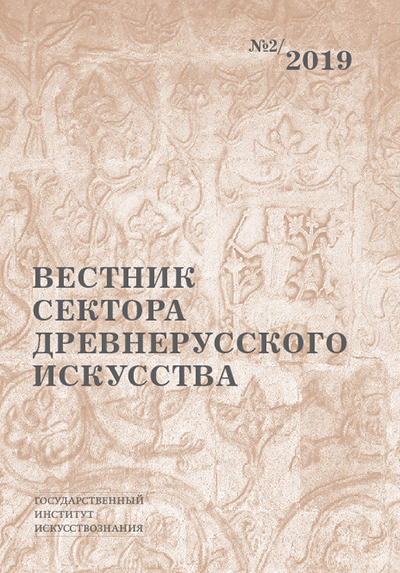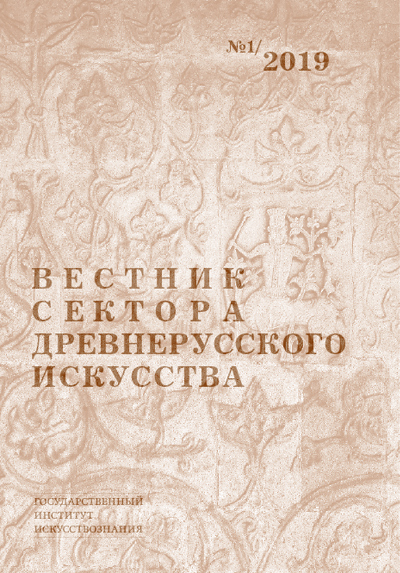2022 ¹ 2
Articles
Armen Kazaryan, Sergey Klyuev. New Phase of the Study of Cave structures in Ani. Main Publications of the 2000–2010s
Abstract
Historiographical review of the publications of the first decades of the 21th century on the topic of cave (rock-cut) structures of the settlement of Ani and its environs is aimed at identifying previously unresolved issues and forming tasks for further research in this direction. This period of development of research is recognized as a new stage in the history of the study of man-made rock objects in this area, and it is separated in time from the previous field studies, organized by N.Ya.Marr, by one hundred years. Three components of the new stage were identified: the study of “Underground Ani” by Italian speleologists under the guidance of R.Bixio (2004); the anniversary album on architecture of Ani (2011); the publications of three books by Turkish colleagues (2016–2018). In many of them, the factual base was replenished, the research material was expanded by the introduction of new monuments, and the work on their systematization was continued, which is based on the research of D.A.Kipshidze, the member of the 14th Ani Archeological expedition (1915). The main drawback of the works of the last decade is the lack of consideration of the phenomenon of Ani cave architecture in the context of the development of architecture in Armenia and the Middle East.
Keywords
Historiography, Ani, Armenian architecture, rock-cut architecture, artificial caves, cave structures.
Irina Sterligova. To the origin of ancient Russian gold and silver ladles
Abstract
The article deals with gold and silver vessels in the shape of a ladle, which existed in Ancient Russia in the 14th— the first third of the 15th century. All of them are directly or indirectly (through the Grand Duchy of Lithuania) connected with the world of the Golden Horde— a multi-component cultural space generated by Chinggisid globalization. Close contacts of the Russian nobility of that era with the Golden Horde khans and Lithuanian princes suggested the commonality of their banquet ranks and gifts, and precious vessels were included in embassy gifts and other awards. The inscriptions on them marked the name and place of the owner in the social hierarchy. Ladles of the 14th — early 15th centuries, along with the famous “Cup of Vladimir Davydovich”, give us the oldest examples of Russian owner's health inscriptions. It is possible that stripes with such inscriptions spread in this era also under the influence of oriental banquet vessels. An analysis of the surviving monuments and contemporary written sources does not confirm the version common in scientific publications of the Soviet period about the autochthonous origin of the ladles and the “purely national type” of these vessels.
Keywords
Old Russian feast ladles, form, purpose, source data, inscriptions, Golden Horde, Grand Duchy of Lithuania
Maria Orlova. Theophanes the Greek and Antiquity. Some Remarks
Abstract
We know mainly from written sources about the murals of Theophanes the Greek, an outstanding Byzantine artist who worked in Russia. The only authentically preserved work of his is the painting of the Church of the Savior on Ilyin Street in Novgorod the Great of 1378. Its surviving fragments allow us to judge (although not in full) about the ornament used by Theophanes. Mostly it is a geometric spatial ornament from the so-called boxes, bars, painted in different projections. This ornament, characteristic of ancient art, apparently played a significant role in the general decorative system of painting. For Palaiologan art it is still unusual, taking into account the interest of this art in the ornamental forms of the Hellenistic and early Christian eras. It manifested itself mainly in the interpretation of floral motifs. The decoration of another Novgorod monument, both territorially and chronologically close to the mural painting of the Church of the Savior on Ilyin street - the painting of the Church of St. Theodore Stratilates on the Brook, 1370–1380s— can complement our understanding of the ornamental repertoire of Theophanes the Greek. There we come across many opus sectile motifs— mostly diamond-shaped forms with various kinds of filling, cloud-filled medallions and variations of the pelta motif, which are also characteristic of decorations of the Roman period and later. It is possible that they were also used in the murals of the Church of the Savior on Ilyin street. The set of ornamental models introduced by Theophanes the Greek, which directly date back to the monuments of ancient antiquity, may, perhaps, have been used for some time by his Russian students and followers, at least in Novgorod. A number of reasons probably determined the interest of the Byzantine painter in the ancient heritage, in the strict, laconic forms of the geometric ornament of antiquity. And among them: the possible connection of the painter with Greece, the monuments of Thessaloniki, the Greek islands, with Cyprus— there the surviving floor mosaics abounded with similar models; the general process of the evolution of ornamental forms in Byzantine art, the saturation of the fantastic plant flora prevailing in the monuments of the first half of the 14th century; a certain concept of the decoration of the Novgorod Church of the Savior on Ilyin street, corresponding to its architectural features.
Keywords
The Church of the Savior on Ilyin Street in Novgorod, boxes, bars, painted in different projections, decoration system, byzantine ornament.
Alexei Gippius. Cryptogram of Dionysius of Suzdal
Abstract
The 24-letter cryptogram, which stands out among the numerous inscriptions on the reliquary of Archbishop Dionysius of Suzdal (1383), has so far not been deciphered. The article shows that it is bilingual: we are dealing with a combination of three tetragrams, encoding brief sayings dedicated to the Cross and presented in parallel in the Greek and Slavonic versions. With this interpretation the cryptogram becomes a key monument of the tradition of «Cross sayings», which was brought to Russia in the second half of the 14th century from the Balkans and underwent original development in its land. The structural uniqueness of the cryptogram allows treating it as the work of Dionisius of Suzdal. Dionysius’s use of this form of Christian cryptography, which flourished in the 13th–14th centuries in the monasteries of Athos and Serbia, indirectly confirms the opinion already expressed that he belonged to the spiritual tradition of Athos associated with St. Gregory of Sinai.
Keywords
Reliquary of Archbishop Dionysius of Suzdal, Christian cryptography, Old Rus epigraphy, acronyms, tetragrams.
Tatiana Tsarevskaya. The Alekseevsky Cross as an artistic phenomenon, the circumstances of its creation and its place in the life of Novgorod
Abstract
The stone cross, created under Archbishop Alexy of Novgorod (1359–1388) and installed by his command on the western facade of St. Sophia Cathedral, is unique not only because of the high quality of the carvings of the compositions carved on it or its amazing preservation, but because of the real rarity of such a product in the form and technique for the art of Ancient Russia and its special significance in life of the medieval Novgorodians. The article examines the artistic and iconographic features of the work, as well as the probable circumstances of its appearance in connection with the oath of the Novgorodians at the Veche, which sealed their refusal in 1385 to the Metropolitan of Kiev (in Moscow) in the right of the court of appeal (“monthly”), which was the only restriction on the autonomy of the Novgorod diocese.
Keywords
Old Russian art, stone carving, Veliky Novgorod, St. Sophia Cathedral, Metropolitan Cyprian, Archbishop John III of Novgorod, iconography, history of the Russian Church.
Petr Pshenichnyi. The images of female saints in Pskov icons 14th–15th centuries
Abstract
The specific veneration of female saints (st. Paraskeva, st. Barbara, st. Ulyana) find its expression in some iconographical and artistic peculiarities of Pskovian icons. We can see these peculiarities in their images, in their iconographical and stylistic specific features. In sum, these features draw the evidence of specific veneration of these images in Medieval Pskov culture. The female saints at present moment as a scientific subject is insufficiently studied, despite these images are the substantial part of Medieval Rus’ heritage, especially Pskovian one in 14th–15th centuries. The most interesting and complicated iconographical variations of female saints’ images was preserved in Pskovian culture. The icons, concerning in this article, elicit sophisticated spiritual characteristic of female saints, underline their status and crucial role, draw the tendency to incorporation of different female saints in one the most venerated image. Thus, taking into account all particularities of these images, we can suppose that the female saints was extremely popular among different types of sanctity in Medieval Pskov culture.
Keywords
Female saints, martyr, Pskov, Pskovian icons, image, Medieval Rus’.
Pavel Aleshin. Bernardino da Borgomanero — Bernardino Rodari? An Attempt to Identify an Italian Master who Worked in the Moscow Kremlin
Abstract
The article attempts to identify the Italian master Bernardino da Borgomanero, who arrived in Moscow in 1494 with the embassy of M. Angelov and D. Mamyrev as an assistant to Aleviz Fryazin (Aloisio da Caresano). An appeal to archival sources allows to presuppose that Bernardino da Borgomanero is Bernardino Rodari, a lapicide and sculptor, a representative of the family of Lombard masters Rodari.
Keywords
Bernardino da Borgamanero, Bernardino Rodari, Rodari da Maroggia, Giovanni Antonio Amadeo, Italian architects in Russia, Aleviz Fryazin, Aloisio da Caresano.
Andrey Batalov, Andrey Yaganov. The history of the restoration of the cathedral of the Annunciation Monastery in Kirzhach and the problem of reconstructing its original appearance
Abstract
The article is devoted to the study of the materials of the restoration of the cathedral of the Kirzhachsky Annunciation Monastery. A detailed analysis of the arguments of the restorers who carried out a complete restoration in the early 1960s led the authors of the article to the conclusion that there were no traces of the original coating that allowed the reconstruction of the completion of the cathedral. The original remains of the coating elements were not adequately read and as a result, an unreliable reconstruction was embodied in nature, misleading specialists in the history of ancient Russian architecture for several decades.
Keywords
Russian medieval architecture, the middle of the XVI century, Kirzhachsky Annunciation Monastery, restoration.
Tatiana Samoylova. The Destiny of the Icon of Our Lady of Tikhvin in the epoch of Vasily III
Abstract
In the very beginning of the 16th century, the image of Our Lady of Tikhvin had no significance as a national shrine. A new stage in the history of its veneration is marked by the year 1526, the year of the Grand Duke's visit to Tikhvin to “pray” to the miraculous image. During the 1520–1530s the exact iconography of the Tikhvin icon had not yet become widespread in Moscow art. The copies of the wonderworking icon began to be made only from the middle of the 16th century, when the legend about Grand Duke giving birth to a son after he prayed before the Tikhvin icon was finally confirmed. The icons of the Mother of God created in the first quarter of the 16th century do not have the inscriptions referring to them as the Tikhvin icons. Both the texts and the icons from this period testify to a high degree of interest in icons of the Hodegetria type as a Constantinople heritage.
Keywords
Icone “Mother of God of Tikhvin”, “Mother of God Hodegetria”, Vasily III, miraculous icon, iconographic type, scribes of the Joseph-Volotsky Monastery, Tikhvin, Legend, literary edits, Novgorod shrine, Moscow tradition.
Iuliia Ratomskaia. To the question of the images of ktitors in the painting of the cathedral Trinity Makariev Kalyazin Monastery (1654)
Abstract
The tradition of considering the images of the king and the queen in the painting of the southern wall of the Trinity Makariev Kalyazin Monastery in 1654 as portraits of Alexei Mikhailovich and Maria Ilyinichna does not correspond to the iconographic features of their image, known from icons. However, it can be assumed that the kneeling figures of the composition “Come, let us pray to the Three-Part Deity”, which included the mentioned images of the king and the queen, could be images of the founder of the monastery St. Makariy Kalyazinsky and Patriarch Nikon. Being in the monastery during the release of the murals, Nicon could influence the creation of its program. There were images of the saint patron of the royal couple— Saint Alexey the man of God and the Venerable Mary of Egypt in the Kalyazin wall painting, but the appearance of the Mary of Egypt cycle in the system of paintings of the Trinity Cathedral, apparently, was not associated with the queen Maria Ilyinichna who stayed in the monastery during realizing frescoes.
Keywords
Kalyazin's frescoes, portraits of Alexei Mikhailovich and Maria Ilyinichna, Makary Kalyazinsky, Patriarch Nikon, Maria of Egypt.
Anatoly Oksenyuk On the history of the formation of the modern appearance of the Refectory of the Andronikov Monastery
Abstract
The article is devoted to the restoration of the Refectory of the Andronikov Monastery that took place in the 1940s. For the first time, on the basis of archival information, the author's solutions that have formed the modern look of the chamber are shown. Such topics as the state of the monument before restoration, the role and authorship of P.D.Baranovsky in the restoration project, the state of the restoration industry in the 1940s are covered.
Keywords
Andronikov Monastery, Refectory, Peter Dmitrievich Baranovsky, restoration, Old Russian architecture.
Chronicles
Restoration chronicles
Daria Skobtsova. Chronicle of the restoration work of the Interregional Agency for Scientific Restoration of Works of Art in Our Savior Church of the St. Euphrosyne Convent in Polotsk (2022)Exhibitions
Yulia Buzykina. Exhibition activities of the Museum of Russian Icons in 2022Galina Nazarova. The exhibition “Reflections on Rublev. Two icons of the artist-restorer V.O. Kirikov”
Reviews
Andrey Yaganov, Ekaterina Ruzayeva. Article Review: Solov'ev K. A. The history and architecture of the Assumption Cathedral of the city of Dmitrov: the problem of constraction dating, 2020Conferences
Olga Zakharova. Anniversary conference dedicated to the 100th anniversary of the scientific and storage department “Museums-Cathedrals”
Iulia Tarabarina. All-Russian scientific conference “The fate of the medieval tradition in the time of Peter the Great”, October 25–26, 2022
Discussions
Lev Lifshits. Reflections on the results of a technical and technological study of the icons of the “Zvenigorod Deesis”
Abstract
The article deals with issues related to the problems of studying the paintings associated with the name of Andrei Rublev and the masters of his circle. They acquired a special actualization after the large restoration and research work on the icons of the “Zvenigorod Deesis” kept in the State Tretyakov Gallery. Without questioning the technical methods of studying the monuments and even pointing out the high level of the work done, the author of the article critically evaluates the principles of interpretation of the observations obtained, which resulted in the assignment of authorship to Rublev. In his opinion, the main methodological miscalculation of the researchers who carried out the work lies in the fact that, in their view, the medieval master is only a craftsman who did not set himself artistic tasks, whose manner of writing practically did not change throughout his entire career. Based on this position, any observed dissimilarity in writing techniques in the compared works of art must inevitably be explained by the work of different masters. The author of the article formulates the principles of a different approach to solving such a problem and gives examples of possible other interpretations of the results obtained. Keywords Andrei Rublev, circle of masters, icon painting, wall-painting, book miniature, technique, technology, style, authorship, workshop, attribution, evaluation criteria, expert assessment.
